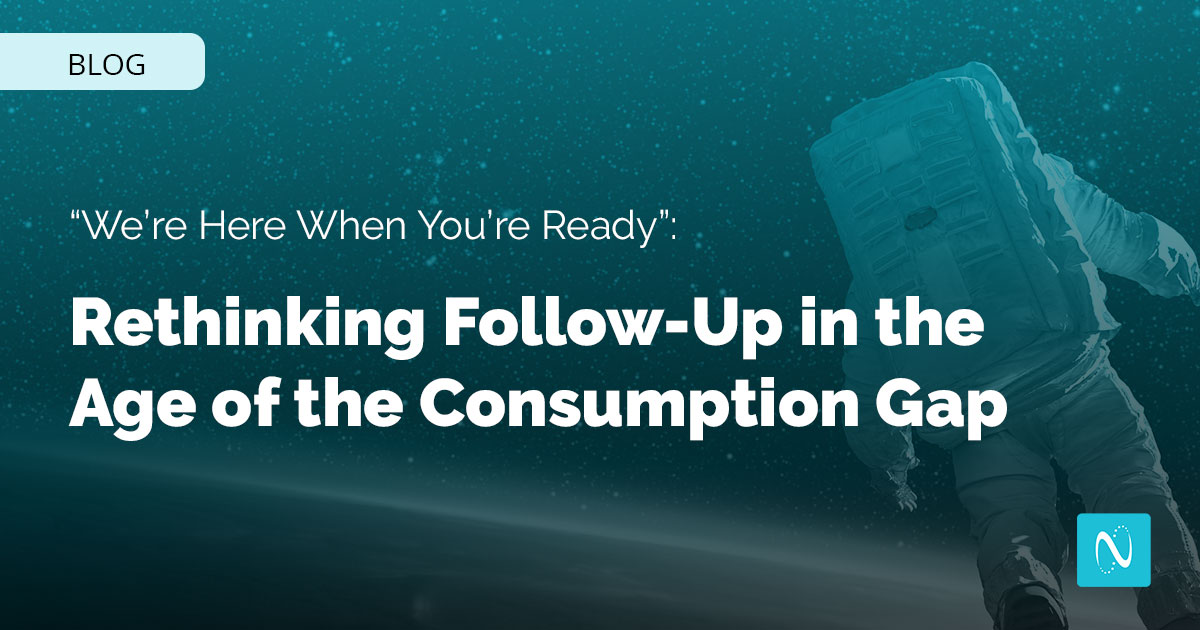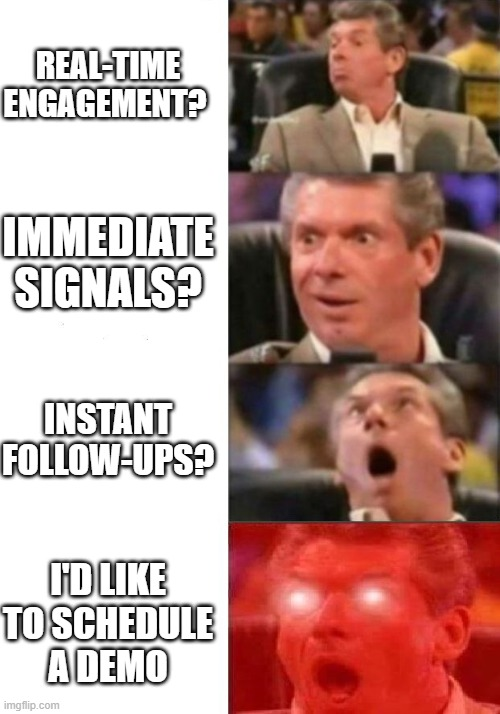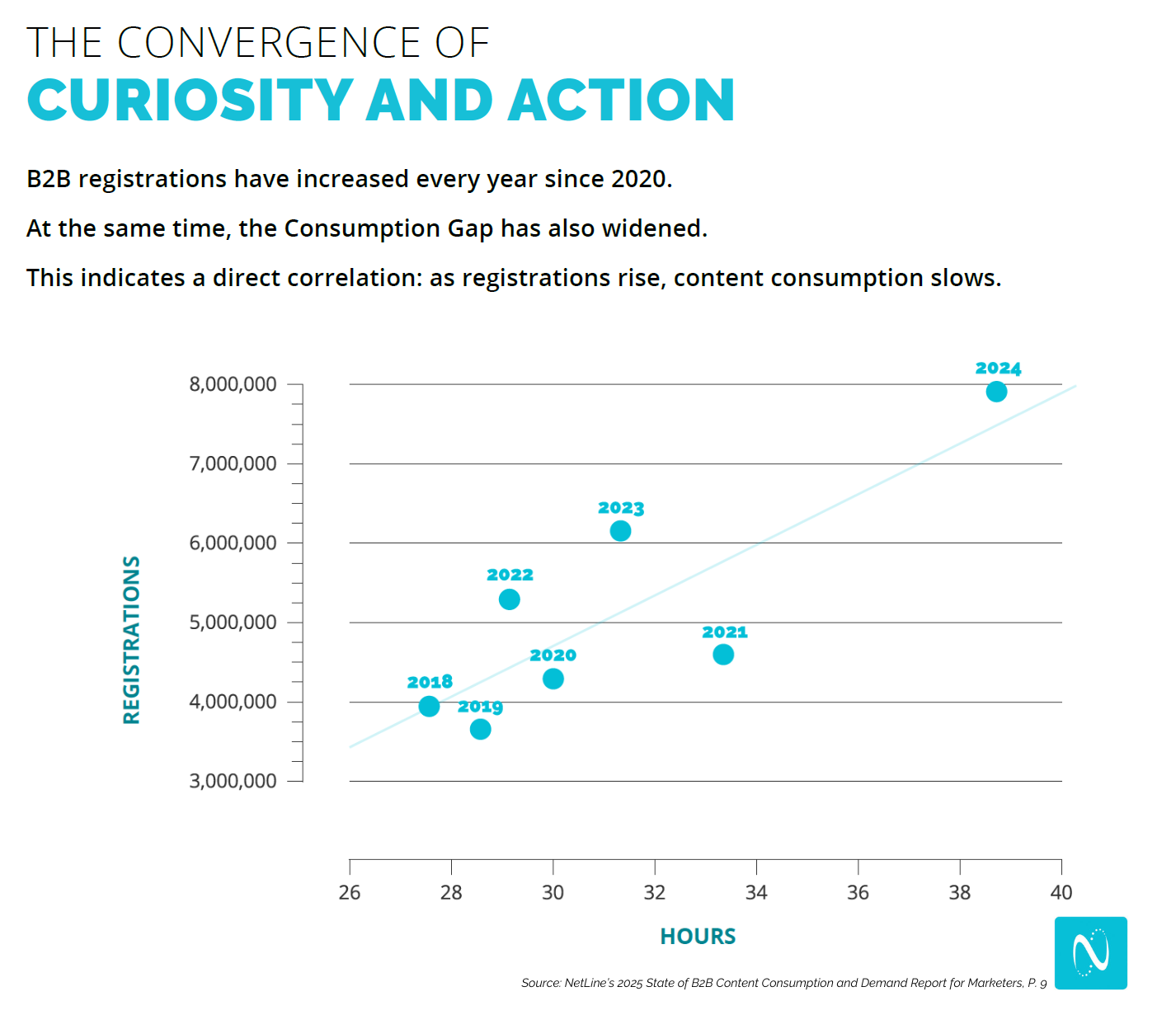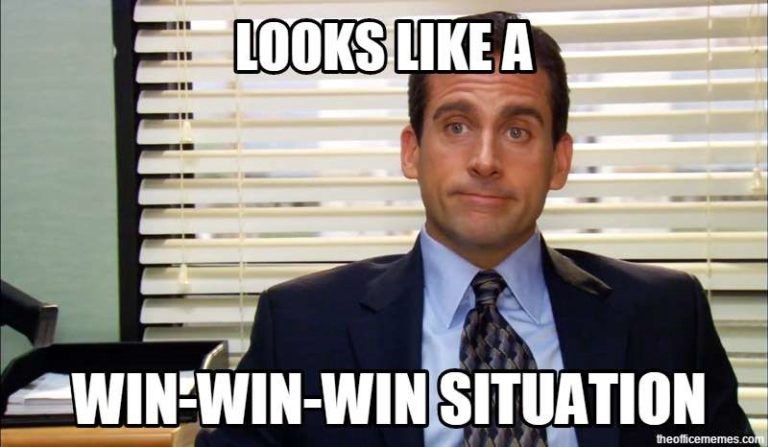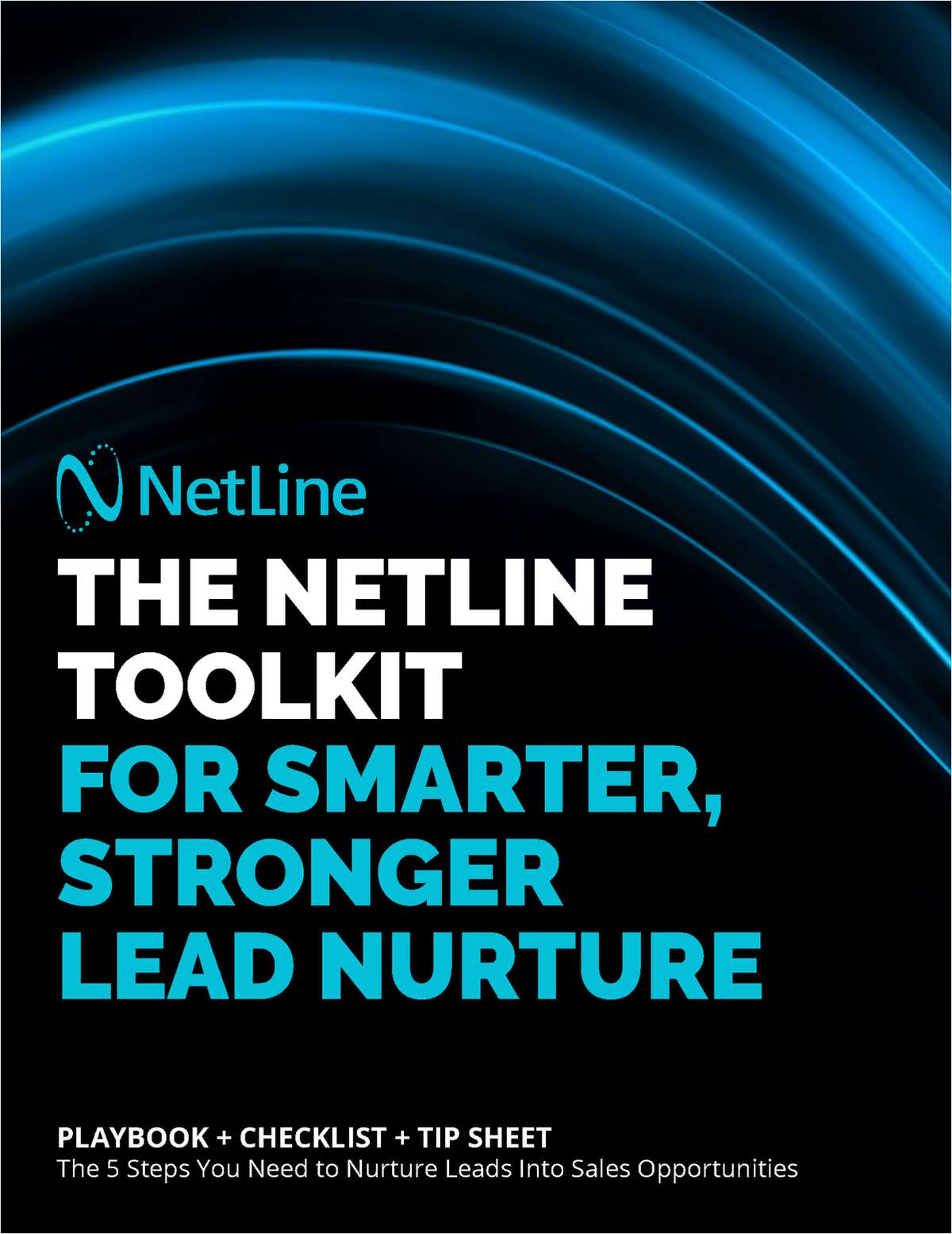Marketers love immediacy. It’s like the Vince McMahon meme.
Real-time engagement? Immediate signals? Instant follow-ups? Sign me up!
And yet, all of this happens so…infrequently that we shouldn’t ever come to expect it. Ever!
Alas, we are all guilty here.
Patience is a Four-Letter Word
The general feeling about the human population today is that we are generally less patient than previous generations.
Much like Veruca Salt, and that one song from Queen, I Want it All, (and I Want it Now!), we are addicted to speed. And it’s made everyone miserable. (Much like the Backstreet Boys, you may have wanted it that way…but it simply doesn’t work that way.)
Some of this is most certainly due to technological advancements, cultural shifts, and behavioral conditioning.
Though the study’s findings are debated, reports like Microsoft’s 2015 Attention Spans study suggest that digital lifestyles, the omnipresence of smartphones, and the near ubiquity of instant gratification may contribute to shorter attention spans.
- Supported by neuroscience research on dopamine’s role in short-term gratification, Social media and services like Amazon Prime reinforce impatience by offering immediate rewards
- Sociologists like Barry Schwartz argue that the overwhelming choices of modern life lead to decision fatigue and impatience.
- Generational differences, such as technology-integrated upbringings and fast-paced education systems, further diminish the practice of waiting.
Overall, the trend leans toward less patience in a society increasingly driven by speed and convenience.
The Patience Paradox
We’ve all been conditioned to believe that the faster we pounce on a lead, the better our odds. In the fantasy version of B2B marketing, a prospect downloads your white paper, devours it on the spot, and happily books a demo right after your perfectly timed “just circling back!” email.
But as Ann Handley points out, “we’ve made patience feel like a liability.” The real world tells a different story.
In the alternate‑universe version of nurturing, it all goes perfectly:
- They register for your content (likely while multitasking during a meeting.)
- They open it immediately.
- They read the whole thing.
- You follow up an hour later.
- They book a demo.
An absolute fever‑dream—but fun to picture, right?
What really happens looks more like this:
- They register for your content, likely while multitasking during a meeting.
- Your email hits their inbox seconds later.
- They haven’t read anything yet.
- Your message assumes they have.
- It falls flat—or worse, annoys them.
The disconnect is expressed in NetLine’s Consumption Gap. On average, buyers now wait almost 39 hours—nearly two full workdays—between saying “Sure, I’ll take it” and actually opening the file.
Treat that silence like a green light and you’re pushy; treat it like a stop sign and momentum evaporates. The move is a yield: respond quickly enough to prove you’re paying attention, then pace your follow‑up to the speed at which the buyer is actually consuming. That’s where speed and patience stop competing—and start compounding.
The Consumption Gap Blueprint
As our research has shown, consumption delay isn’t just a metric; it’s a message.
This message can mean a few things
- They’re interested,
- but they’re busy.
- but forgot about it.
- but they have no desire whatsoever to hear from you.
- They’re not interested,
- but they wanted your content.
- because they no longer wanted your content.
- because they found what they wanted elsewhere.
Ultimately, what it emphasizes is that buyers are overwhelmed and that curiosity and action aren’t as tightly linked as we want them to be.
Most actionably, our follow-up strategy needs to change.
Why Pace Beats Race
Where someone fits within a nurture program depends on a variety of factors. Format choice is your first clue.
If we are to take the advice that the data reveals to us, it is akin to something B2B marketing speaker and The Time to Win author Jay Baer said to me in A Candid Conversation on Time, Trust, and Buyer Behavior.
“Marketers and sellers need to treat prospective client activities the same way a bartender greets a new guest,” Baer said. “You need to emphasize that, “We’re here when you are ready.”
Format’s Relationship to Readiness
This is about understanding which formats suggest we slow down vs. where your team should spend its energy.
- Playbooks and research briefs tend to be skimmed within a day
- eBooks and tip sheets often linger closer to two.
- A prospect reaching for a quick‑hit playbook is waving a “help me now” flag.
- Someone downloading a 30‑page eBook is still exploring.
- Push them both through the same follow‑up cadence and you’ll either annoy the first or abandon the second.
| Format | Time to Consume | Buying Intent | Best Strategy |
| Playbooks, Research Reports | Fast (24–30 hrs) | High (0–3 mo window) | Fast-track outreach with a CTA |
| Guides, Articles, Reports | Medium (35–45 hrs) | Moderate (3–6 mo) | 48-hour follow-up + summary |
| eBooks, Cheat Sheets, Tips | Slow (40–50+ hrs) | Low (<12% 12-mo intent) | Light-touch, nurture-oriented intro |
The Win-Win-Win
Even though your registrant likely won’t be downloading/opening/reading your content for another day and a half on average, you CAN (and should!) send them a follow-up email.
You should do so quite quickly. (Bonus: If you have a related piece of content that speaks to the same challenge, include it in your follow-up, too.)
Wait, weren’t you saying speed was bad?
Not quite. Speed without purpose is bad. Patience without purpose…also bad.
Which means success hinges on two opposing forces: speed to acknowledge and patience to let buyers breathe. Get those in rhythm and the next touch feels helpful, not hurried—or worse, harassing.
The message, however, doesn’t need to make an ask to schedule a follow-up call or demo. Just a simple hello saying that you’re available if they need anything, much like a bartender.
For example, we encourage NetLine clients to be prepared to provide additional value in their follow-up. A simple synopsis of the asset they’ve registered for, for instance. The convenience and time-savings offered by such a synopsis are an easy way to remain on their good side without having to create more work for you or your team.
(And it’s simple enough to run your assets through an AI to see how you can massage them into producing a super succinct and successful synopsis.)
- For the buyer: They’re not overwhelmed. They feel seen. They get a preview of value without needing to do anything right away.
- For the business: You get to engage at the moment of highest brand recall (right after registration), while planting seeds for deeper engagement later.
All without leaving behind the usual feelings of “ugh, just please go away,” most of us get from sales outreach messages.
This is where the Consumption Gap offers marketers a powerful reframe. It’s not a barrier—it’s a blueprint.
Intent Begins with Respect
The Consumption Gap isn’t a problem to solve—it’s a pattern to respect.
What matters isn’t the speed of your response (though Jay Baer would disagree; it does.)
What matters is how thoughtfully you show up.
In a world of crowded inboxes and impatient buyers, the brands that win are the ones who whisper, “We’re here when you’re ready,” and mean it.
The NetLine Toolkit for Smarter, Stronger Lead Nurture
If you want a step‑by‑step playbook that turns the “speed + patience” philosophy from this article into an executable system, grab the NetLine Toolkit for Smarter, Stronger Lead Nurture.
In one eKit, you’ll get:
- A five‑step strategy guide
- A ready‑to‑use checklist
- And a quick‑hit tip sheet built around real buyer‑behavior signals, like custom‑question responses and the 48–72‑hour Consumption Gap window we just explored.
Apply this toolkit and your nurture program stops guessing: timing, segmentation, and CTAs align with actual buyer readiness, boosting engagement and pipeline, without the pushy aftertaste.
